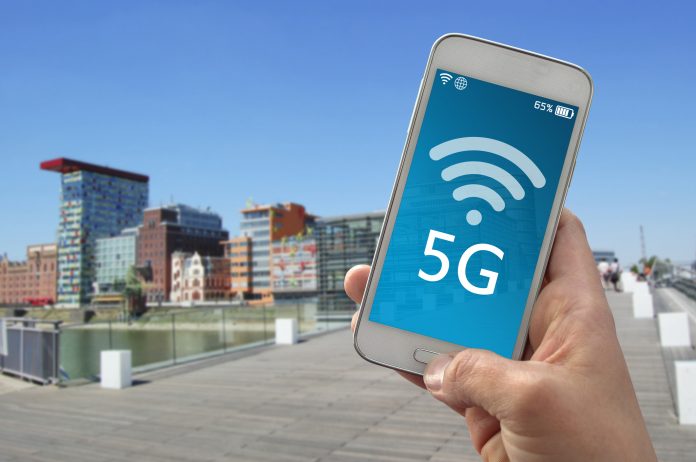The disparity between fibre broadband connectivity in rural areas and urban hubs is greater than ever before and continues to grow, here we discuss how it can be solved
While the large cities of London, Manchester and other more well-developed areas are thriving when it comes to connectivity, smaller remote regions are suffering – and it is resulting in significant inequality for both business and everyday life.
In 2018, Ofcom reported that 677,000 UK homes are stuck with slow broadband that’s unable to reach speeds of at least 10Mbps. This is the minimum requirement for most modern internet usage and is a long way off the bandwidth required for the booming number of enterprise use-cases such as SaaS or IoT.
Residents in rural areas may struggle with simple tasks like chatting over Skype, watching movies and conducting business versus residents in London. Inadequate connectivity has the potential to leave Britain’s rural communities high and dry, an unacceptable consequence of digital transformation in the UK.
This disparity has a knock-on effect to regional economies. Newspaper headlines are currently filled with the promises of 5G and launch plans that begin in major UK cities: however, many rural areas are still unable to benefit from adequate 4G coverage. There is not nearly enough attention given to digital inclusion for the whole of the UK. Full fibre connectivity will help to solve the issue – but only if the considerable benefits are understood by those with the power to do something.
Small steps forward
You might consider online gaming, Netflix or Spotify streaming to be a luxury. However, the reality is that these features and services are now a big part of our daily lives and will be increasingly the norm in the future. In addition, messaging applications and video chatting can be a lifeline for people in rural areas, allowing them to communicate with their loved ones or work remotely.
To not have access to these services puts people at a disadvantage simply because of their postcode. The problem has now become so large that some local communities have even taken to investing in and installing fibre themselves. The Broadband for the Rural North (B4RN) initiative has helped connect over 5,000 homes to faster broadband – but this has only been possible by volunteers who put their weight behind the change. Communities put their money together to pay for installation and then trained-up or utilised those with strong technical skills to build the architecture themselves – the very definition of community spirit.
Access to high-speed broadband is certainly a major problem in the UK. In fairness, the Government is taking some action to tackle the issue. Local authorities are beginning to prioritise fibre rollout in some parts of the UK, with the Local Full Fibre Networks challenge fund providing £53 million for fibre connectivity in Britain. The Spring Budget highlighted the nine areas of the country that will utilise the LFFN: Wave 3 allocations.
This is a step in the right direction for digital inclusion. But compared to the estimated £30 billion cost of the national full-fibre rollout, LFFN looks like the first step of a much longer journey. Not only is the funding limited, but it also fails to address the “last 10%” problem of connectivity which leaves residents in the most difficult-to-reach areas unconnected.
Media coverage of 5G often highlights the promise to boost the UK economy. But what’s often overlooked is that to fulfil these expectations for 5G, the UK requires much greater full fibre coverage as well. 5G needs microcells, each with its own fibre connection. For 5G to expand beyond London and the UK’s other major cities, getting fibre into the ground must become a priority for local authorities. It’s exciting to dream about super-connected smart cities – but the UK needs to put far more fibre into the ground for these dreams to become reality.
What can local authorities do while they wait for the Government to play catch-up? More money invested in fibre deployment will certainly help, but the community-driven approach of other countries is another way that rural areas can take the matter into their own hands.
Local authorities hold the keys
Sweden provides a blueprint as to how a community approach can help bring fibre to practically the entire country. Sweden currently has 91% full fibre coverage, but this hasn’t been delivered solely by large telecom operators. Local authorities and district councils have also played a significant role.
We can liken Sweden’s localised fibre rollouts to installing new speedbumps outside schools, fixing potholes in streets and introducing local recycling schemes. These are all public duties that our local councils are responsible for. So why can’t local councils also be responsible for broadband connectivity as well? High-speed broadband provides important social benefits and economic advantages to a community. This is why Swedish local authorities took it upon themselves to invest in and roll out their own full fibre networks.
Swedish councils adopt an “open access” model, in which they allow multiple service providers to access and use the network to deliver their own broadband services. By following the open access model, Sweden was able to lower costs for the service providers, and at the same time create a competitive environment which benefits residents, in terms of lower costs and more choice.
The cost of deploying fibre infrastructure can certainly seem daunting at first to a local authority, but the economic and social value is often misunderstood. With full fibre connectivity, public services like schools and hospitals can improve their performance, and reduce costs through cheaper maintenance and repair costs, saving money for local authorities and seeing an ROI on fibre sooner than expected. Local councils should look to partner with independent fibre providers, rather than incur the total cost of fibre deployment.
To solve the problem of rural broadband in the UK, local authorities need to take control of their fibre future. Relying on centralised funding is no guarantee that rural areas won’t still be left behind versus the swift digital innovation occurring in big cities.
If rural communities are to benefit from the next era of connectivity with 5G, then fibre must become a priority for local councils. Deploying fibre in rural areas improves the quality of life of local communities by offering more opportunity for business growth and more reliable networks for personal communications. There is much to do to bridge the UK’s connectivity gap: Investing in and deploying full fibre has a huge role to play in doing so successfully.
VXFIBER has a significant presence in South Africa and several smaller operations in Costa Rica and Malaysia, but Europe is now our focus, the UK being a priority for us. Our approach to fibre connectivity in Britain is built on the Open Access Model utilised in Sweden.
In this model, fibre isn’t owned by the company that provides the consumer service but by different types of fibre owners such as utilities, local authorities, or landowners. These holders then rent out the fibre to multiple service providers, who can access and utilise the network to deliver fibre broadband. This lowers costs for the service providers and encourages greater competition, leading to a much higher take-up.
If you give operators greater backhaul options, it will only increase the public’s accessibility to fibre connectivity and the social and economic benefits this delivers.












Urban internet is faster than rural, the reason behind it is that the number of consumers is higher in urban areas.